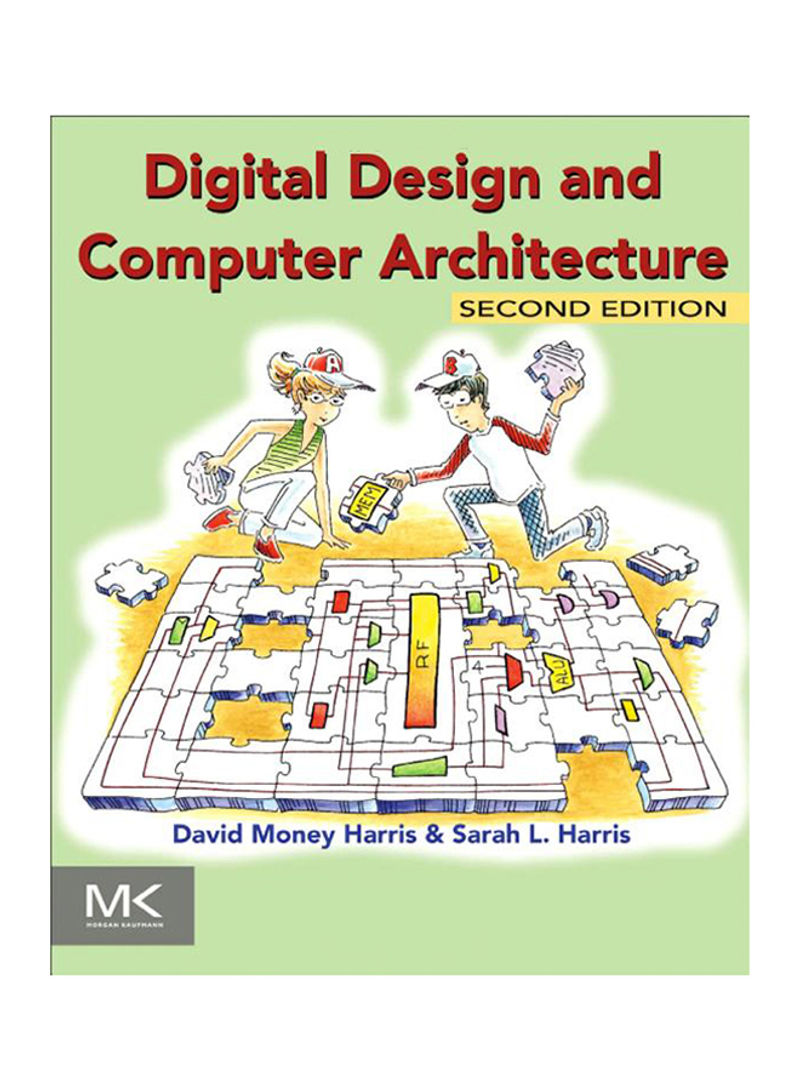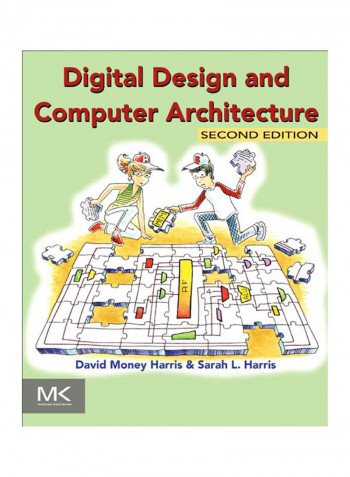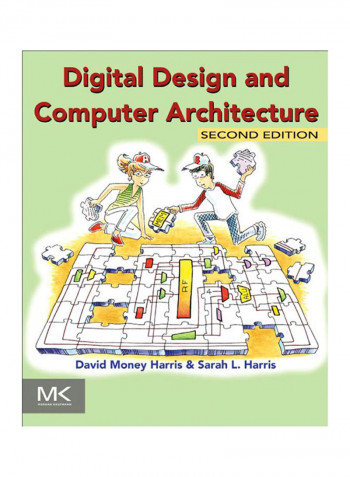Digital Design and Computer Architecture Paperback 2
Recommend
Sort by
Rating
Date
Specifications
Author 1
David Money Harris
Book Description
Digital Design and Computer Architecture, Second Edition, takes a unique and modern approach to digital design, introducing the reader to the fundamentals of digital logic and then showing step by step how to build a MIPS microprocessor in both Verilog and VHDL. This new edition combines an engaging and humorous writing style with an updated and hands-on approach to digital design. It presents new content on I/O systems in the context of general purpose processors found in a PC as well as microcontrollers found almost everywhere. Beginning with digital logic gates and progressing to the design of combinational and sequential circuits, the book uses these fundamental building blocks as the basis for the design of an actual MIPS processor. It provides practical examples of how to interface with peripherals using RS232, SPI, motor control, interrupts, wireless, and analog-to-digital conversion. SystemVerilog and VHDL are integrated throughout the text in examples illustrating the methods and techniques for CAD-based circuit design. There are also additional exercises and new examples of parallel and advanced architectures, practical I/O applications, embedded systems, and heterogeneous computing, plus a new appendix on C programming to strengthen the connection between programming and processor architecture. This new edition will appeal to professional computer engineers and to students taking a course that combines digital logic and computer architecture
ISBN-10
123944244
ISBN-13
9.78012E+12
Language
English
Publisher
Elsevier Science & Technology
Publication Date
1-Sep-12
Number of Pages
712
About the Author
David Money Harris is an associate professor of engineering at Harvey Mudd College. He received his Ph.D. in electrical engineering from Stanford University and his M.Eng. in electrical engineering and computer science from MIT. Before attending Stanford, he worked at Intel as a logic and circuit designer on the Itanium and Pentium II processors. Since then, he has consulted at Sun Microsystems, Hewlett-Packard, Evans & Sutherland, and other design companies.David's passions include teaching, building chips, and exploring the outdoors. When he is not at work, he can usually be found hiking, mountaineering, or rock climbing. He particularly enjoys hiking with his son, Abraham, who was born at the start of this book project. David holds about a dozen patents and is the author of three other textbooks on chip design, as well as two guidebooks to the Southern California mountains. Sarah L. Harris is an Assistant Professor of Engineering at Harvey Mudd College. She received her Ph.D. and M.S. in Electrical Engineering from Stanford University. Before attending Stanford, she received a B.S. in Electrical and Computer Engineering from Brigham Young University. Sarah has also worked with Hewlett-Packard, the San Diego Supercomputer Center, Nvidia, and Microsoft Research in Beijing. Sarah loves teaching, exploring and developing new technologies, traveling, wind surfing, rock climbing, and playing the guitar. Her recent exploits include researching sketching interfaces for digital circuit design, acting as a science correspondent for a National Public Radio affiliate, and learning how to kite surf. She speaks four languages and looks forward to learning more in the near future.
Author 2
Sarah L. Harris
Edition Number
2
Editorial Review
"...intended as a course text for college or university level students, this book would serve just as well for anyone who just wants to learn about computer architecture or design... it stands as one of the best introductions to the subject and seems ideal for anyone wanting to learn digital design with no prior knowledge. The time investment would be handsomely rewarded and the range of topics covered, as well as the clear explanation of trickier issues, is extremely impressive." --BCS.org, April 2013 "Harris and Harris have taken the popular pedagogy from Computer Organization and Design down to the next level of refinement, showing in detail how to build a MIPS microprocessor in both Verilog and VHDL. Given the exciting opportunity that students have to run large digital designs on modern FGPAs, the approach the authors take in this book is both informative and enlightening." --David A. Patterson, University of California at Berkeley, Co-author of Computer Organization and Design "Developed at Harvey Mudd College, this undergraduate textbook introduces combinatorial logic and sequential logic circuit design, describes the computer's microarchitecture that connects hardware with software, and explains how to build a MIPS microprocessor." --Reference and Research Book News, February 2013



